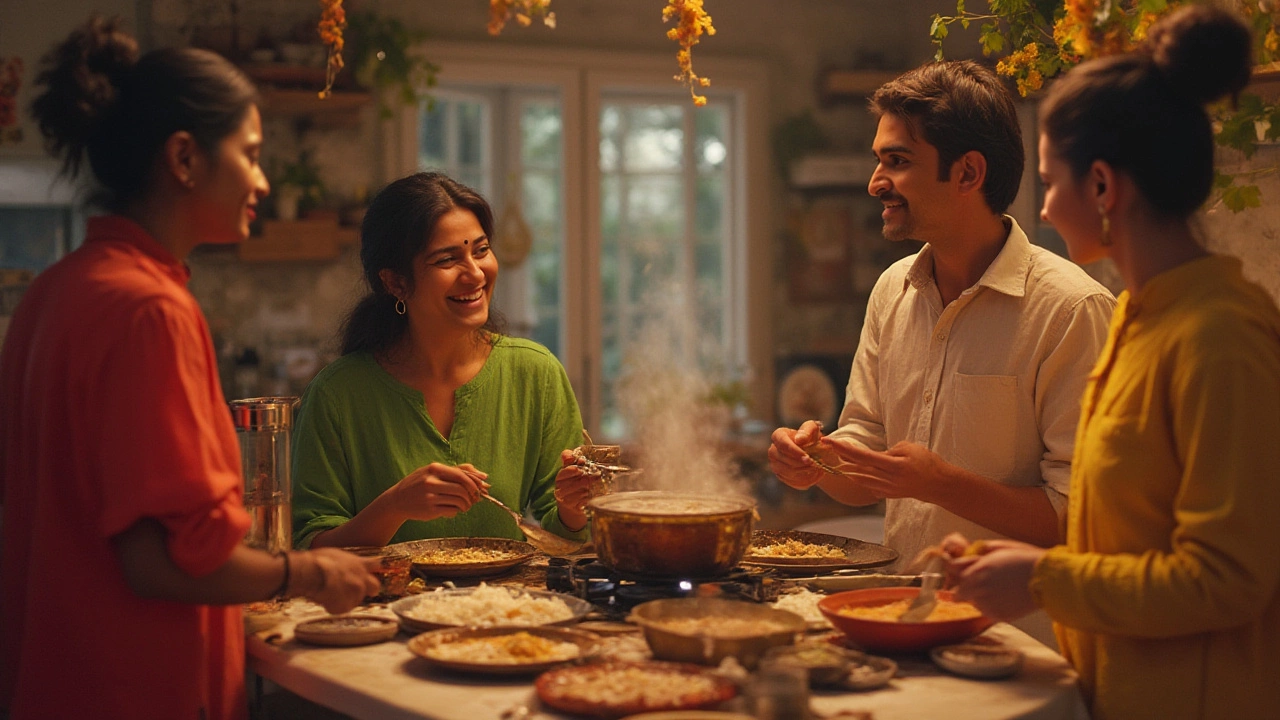What "Americans Call Dal" Really Means
If you’ve ever heard a friend say, “I’m making dal tonight,” you might wonder what that is. In the U.S., “dal” is the shortcut for a whole family of Indian lentils, beans, and peas that get cooked into a hearty, saucy dish. It’s not a single ingredient but a category that includes red lentils, split peas, yellow moong, black urad, and more. Knowing this helps you pick the right dal for the flavor you want.
Common Types of Dal You’ll Find in Grocery Stores
Most supermarkets stock three basic dal varieties:
- Red lentils (masoor dal): Cook fast, turn soft, and give a slightly sweet taste. Great for quick soups.
- Yellow split moong (moong dal): Light and fluffy, perfect for a cooling, soothing dish.
- Black urad (urad dal): Heavier, earthy, and often used in South Indian batter for idli and dosa.
When a recipe just says “dal,” check the ingredient list or ask the author which type they meant. The cooking time and spice balance can change a lot between them.
Simple Steps to Cook Perfect Dal Every Time
1. Rinse well. Rinse the dal under cold water until the water runs clear. This removes dust and excess starch.
2. Soak if needed. For larger varieties like urad, soak 30 minutes to cut cooking time in half. Smaller red lentils usually don’t need soaking.
3. Use the right water ratio. A good rule of thumb is 1 cup dal to 3 cups water. Adjust if you prefer thicker or thinner consistency.
4. Bring to a boil, then simmer. Once bubbling, lower the heat, cover, and let it simmer. Red lentils take 15‑20 minutes, moong about 20‑25, urad 30‑40 minutes.
5. Add seasoning. Classic Indian dal gets a tempering (tadka) of hot oil, mustard seeds, curry leaves, garlic, and chilies. Pour the tadka over the cooked dal for a burst of flavor.
6. Finish with a squeeze of lemon. A dash of lemon juice brightens the dish and balances the earthy taste.
Follow these steps, and you’ll have a comforting bowl of dal ready in under an hour, even on a busy weeknight.
While you’re exploring dal, you might also enjoy related posts on our site—like tips for perfect biryani, how to store chutney, or the health facts about Indian sweets. Each article follows the same practical style, so you’ll always find clear, tasty guidance.
Dal isn’t just a side dish; it’s a protein-packed staple that can stand on its own or pair with rice, roti, or even a salad. Experiment with different spices—turmeric, cumin, coriander—to make each batch feel fresh. And remember, the more you cook it, the better you’ll understand the subtle differences between each type.
So next time you hear someone say “I’m making dal,” you’ll know exactly what they mean and how to help them nail it. Grab a bag of your favorite dal, follow the simple steps, and enjoy a warm, nutritious taste of India right at home.
What Do Americans Call Dal? Discover Dal's Name and Place in American Cooking
Explore what Americans call 'dal,' the roots of the word, and how this Indian staple fits into American food culture. Find facts and tips about cooking dal in the US.
